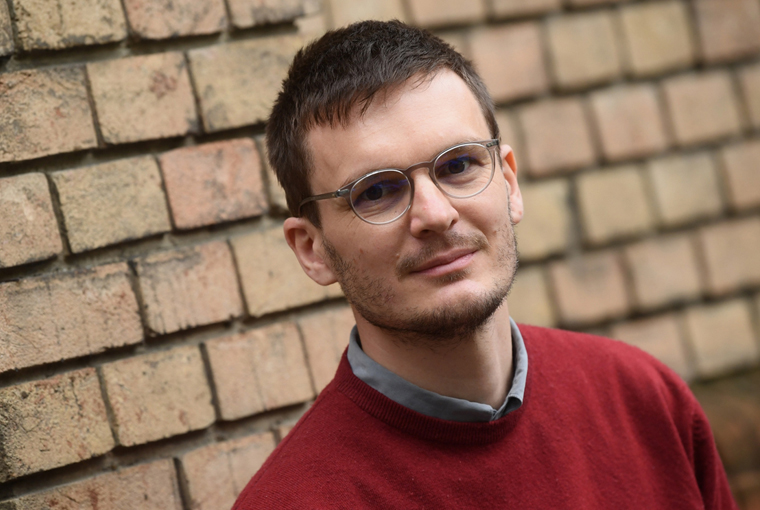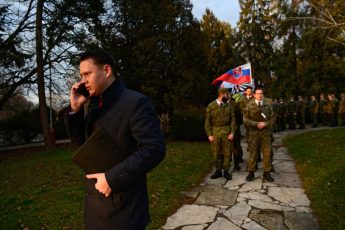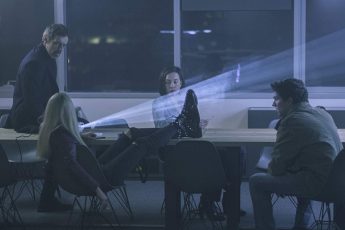
Documentary filmmaker Srđan Kovačević discusses the politics and making of his film about ITAS, a worker-owned factory in Croatia. We met Kovačević at the Sarajevo Film Festival (August 13-20), where his film screened in the Documentary competition.
What first brought you to the ITAS factory?
I’m originally a cinematographer. Politically speaking, I’m a leftist, and there were some realities that weren’t being covered by my colleagues and one of them was ITAS. In the media, the project was covered as a really successful example of the workers’ fight, workers taking over the factory and having their self-governing system. I wanted to go there and shoot this nice example, to make a film about a successful example of the workers’ struggle that would be an inspiration for other workers. But when I arrived, I figured out in the first couple of days that it’s much more complex and that not all the workers are satisfied, and that in a way there is a vertical company structure rather than a horizontal one. So the film became an analytical, critical reflection on the current situation.
How was it to film with the workers? Did they accept you right away?
Some of them accepted me quite quickly, some didn’t. Most of the workers viewed me neutrally. They were kind of cautious – they wondered what I was up to. Nowadays nobody knows how they will be represented, and I always like to say that the mass media is not behind workers, it’s behind capital, and everybody can sense it. I really understand people who don’t like to appear in front of the camera anymore. Under Socialism, the media were considered vehicles for fighting problems, but today it’s the other way around. My colleagues from back then, the older photographers and journalists, recall that when they came to a mine or a strike, the workers were just expecting them and really wanted to talk to the media. They wanted to express themselves, and they were really thankful that somebody had come to tell their story. But nowadays I don’t think the workers trust media outlets anymore.
In the film we can sense a generational difference between the older workers, who are motivated by ideology, and the younger workers, who want stability.
Yeah, they want money. Like one of the workers says in the film – only cash, no shares. What are you going to do with shares? The working class don’t know what to do with them, and I would say this is one of the systematic obstacles in the transformation from Socialism to capitalism. Because to be fair with the workers, at least on a symbolic level, the workers were allowed to buy some of their companies’ shares at special rates, yet nobody had taught them what shares are, what they can do with shares, what the possibilities are and what the risks of owning shares are. And that was intentional, because everybody thought the workers would buy shares and get some money, but then they wouldn’t know what to do with the shares and eventually we’ll be able to buy them back for an even lower price. That was the intention in the 90s, and the scheme was successful. And this is still happening today. Even though some of the shares are of facilities that are productive and profitable, workers are selling their shares.
And what’s the current situation with ITAS?
It’s a similar situation to that in the end of the film. They’re now paying wages regularly, but the situation is still on the edge.
And was the situation of ITAS affected by Covid?
Covid definitely had an impact on them. They only got two months of state support, and after that they couldn’t get support any more. They’re struggling and we’ll see what will happen.
At the beginning of the film, you have a text stating that the profits of the film will be shared with the workers. Could you tell me a bit about how you came to that decision, and how you negotiated it?
When I started to shoot – or actually even before, when I was still a cinematographer – I always thought that the usual set-up with production companies was unfair. You sign a contract, you get paid for your work, and then in the contract you cede your rights to the production company permanently. I always thought it was unfair and I thought that if I would ever make my own film, it would be different, so I came to the Fade In production company with this idea and they were cooperative. Then I started to figure out how it would work. At first, I thought about dividing the rights between all the workers, but it was too complicated, so then we divided the shares and made a new kind of collective contract for both the film workers and the protagonists.
Do you think there will actually be any profits to divide?
In documentary cinema, it’s hard to make any profit, but I thought it was important to do it, even if only symbolically. It’s important that we put this idea into practice and that we can say we did it. We wanted to share this idea and contract publicly with the film community in Croatia and other countries.
How was the collaboration with the workers in terms of the creative side? Did you discuss the film with them as you were shooting?
I thought about discussing the film with them, but it was too complicated. They didn’t have time for these kinds of activities. I had this plan to show some parts and scenes or a rough cut to the female workers in the factory, and to try to work with them, partly in the interest of political education, but also to talk about the film and to involve them in the creative process. But we could not find a suitable time to do this. One worker had kids and had to collect the kids, another one had another obligation… It was really difficult, and I thought if they don’t have the time to work with me, then I just can’t do it.
Did you show them the film already?
Yep, I did. But to be honest these kinds of films, or this kind of culture, has a different impact on this rural population than I had expected. I was born in the city, in Zagreb, and the people who were around me always consumed culture, consumed theatre, cinema, etc. But what I learned is that it’s really hard to expect the same thing from these rural communities. They don’t have the same understanding of this kind of content as I do, so if I was making a film for them, it would have to be a very different kind of film. And in this regard, the film didn’t make the impact that I thought it would. I thought the impact would be much bigger in a way. I mean, I understand them – if you work in a factory for €500 or less, you have to have a field and domestic animals, you have to have a garden. You have different kinds of duties in life. You come home from work and then you work again. If you have children, you work all day, you don’t have time for consuming culture. Television, or now the internet, is the content that they’re used to, not films lasting an hour and a half or two hours.
What audience did you have in mind while making the film?
That’s a difficult question to answer. In all these applications – maybe not so much for producing a film, but in other cultural applications – there’s always this question of the public. Who is the public? I don’t know. I didn’t think of the public, I thought of the other workers who are going to see the film. Film or art concerning some kind of political struggle, or a struggle for different aspects of a better society, cannot work on its own, just as the workers cannot work on their own. Film or art can have an impact on society if these fields are connected with other key elements, like political subjects or local communities. But it’s really hard to exist on your own, and this is also the story of ITAS. They’re all alone, they don’t have the support of the local community, they don’t have the support of the political scene. It’s really hard.
Do you think this kind of worker-owned organization will still be able to exist in the future?
There is potential, but it depends a lot on the broader conditions. Throughout history, the workers’ struggles succeeded when they were supported by other parts of society or when they were otherwise connected with them. There’s this film by Barbara Kopple, Harlan County U.S.A. It shows how the women in this small community supported a strike, and that without their support the strike wouldn’t have achieved anything. It’s a very insightful example. It’s a film without any main protagonists, and you can see the women from this community start to organize themselves to support the miners. And that starts to be the key element in the film, it’s really great. The structure of the film is also really nicely laid out, because you don’t have the impression that there is somebody leading the struggle, like Varga in my film for example. They all participate in organizing and supporting their husbands or whoever. So to merge these struggles with other people who are around the struggles, who aren’t involved directly, is really important. If you don’t have that, everything is really tricky.
You basically made the film on your own. Was that a creative or a financial decision?
It was a few things taken together. In the beginning, I didn’t have any money and I thought I would have to spend quite a lot of time filming, so I didn’t want to ask any of my colleagues because I didn’t know if I could pay them. So I figured out how to record the sound myself and bought some really cheap sound equipment and just started to shoot on my own. And then I got some support for developing the story, which was a pleasant surprise. Then we got support from HAVC (Croatian Audio-visual Centre) for project development, which also surprised me, but at that point I knew we would probably get production funding too. I had already finished 80 days of shooting before that.
How did you manage to edit so much material?
Every day when I came home and copied the material, I wrote down the good things that were in the material. And I had a great editor, Damir Čučić, who helped me a lot. He has a lot of experience, he’s a great editor and politically he could understand everything without having to say it. We have the same political perspective, so I didn’t have to explain anything, he sensed the same things that I did. He would just cut the scenes and we didn’t need to talk much.
And then in the end I needed to go through all the material again, which was really painful. For a month or two I went through it again and again, searching for small bits to connect the scenes. And in the end, five or six really nice scenes came together at the end of the edit, because that is when I stumbled upon them by chance. Usually, I was looking for something else and then they turned up instead. There’s an interview with Varga where he says, “they’re bastards, that’s how capitalism works”, which I found on the last day of editing. It was a year and a half of editing in total.
Are you working on any new projects at the moment?
I’m currently finishing another film, also a documentary, about a small union in Ljubljana which is called “Delavska svetovalnica”, “Workers’ Council”. Formally, they’re an NGO, not a union, but they do union work nobody else does. They work with different sorts of workers, mostly migrant workers from Serbia and Bosnia, and they’re doing an incredible job.
Thank you for the interview.
© Image: Marko Lukunic / Pixsell




Leave a Comment